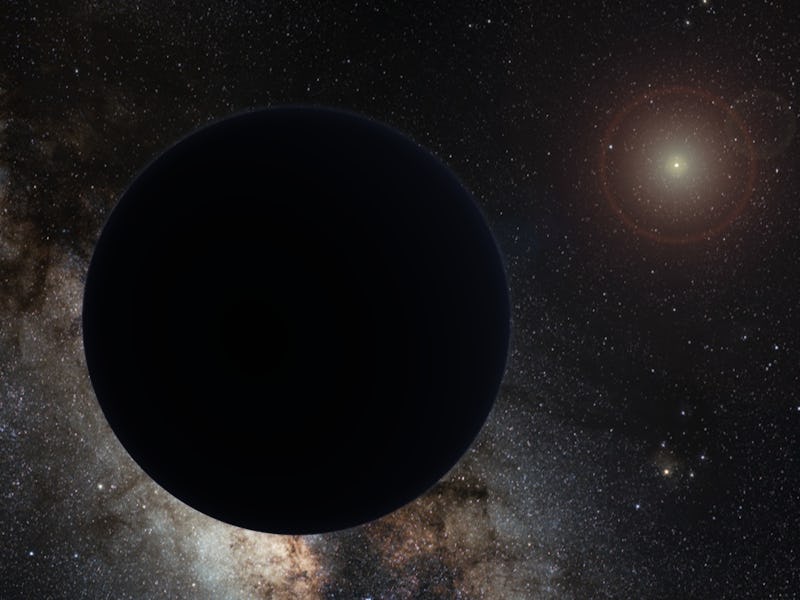Why We Might Be 50 Percent Closer to Finding the Mysterious Planet Nine
Planet hunters just got an early Christmas present, wrapped up in computer modeling.

When astronomers revealed in January the possibility of a ninth planet for the solar system, the public became ecstatic. There was just one problem: we didn’t have actual proof Planet Nine even existed. Even after a few years of research, the only evidence infamous “Pluto Killer” Mike Brown and his colleague Konstantin Batygin — both based at Caltech — could offer was strange movements caused by unknown gravitational forces. This was likely caused by a “massive planet,” but who could say for sure?
Now, a team of French scientists think they’ve narrowed the search area for this planet — with an estimated 10,000 to 20,000 year orbit, mind you — a reduction of about 50 percent.
In a new study published in Astronomy and Astrophysics, the scientists illustrate how data from NASA’s Cassini spacecraft (currently orbiting Saturn) can be used to exclude two major zones of the solar system and basically narrow the search by half.
It has to do with how a ninth planet would affect the rest of the solar system. Brown told Inverse back in January that Planet Nine is too far away to have a noticeable affect on the Earth, but according to the mathematical modeling from these new French researchers, that’s not the case for other planets more distant from the sun.
Planet Nine — which Brown and Batygin think is about 10 times bigger than the mass of the Earth — is thought to have an elongated oval-shaped orbit. Its gravitational influence on the other planets of the solar system only fits in with the Cassini data if we eliminate two of the search zones.
This is an incredible boon to any planet hunters looking to find number Nine first. And it might get even easier — the French researchers speculate the search field could be narrowed even further if Cassini’s mission is extended to 2020 (it’s set to wrap up its current mission next year).
It is still going to take years before we find Planet Nine (if it’s even really there), but this new data is a welcome asset to making that goal achievable sooner rather than later.